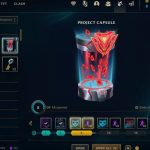Are you tired of losing in the world of gaming? If so, you’re not alone.
Learning how to use turrets, inhibitors, and nexus to your advantage is key to victory.
With some practice and these tips, you’ll be on your way to becoming a master strategist!
Key Takeaways
- Turrets fortify champions and protect minions, and destroying enemy turrets is crucial for victory.
- Placing inhibitors requires considering team vitality and the risk of being caught by enemies.
- Taking calculated risks and balancing impact and efficiency are important for successful inhibitor placements.
- Defending the nexus is crucial to prevent opponents from winning the game.
Understanding Turrets
Turrets are essential for achieving victory in League of Legends, so it’s important to understand them.
In each game, there are three turrets that fortify each team’s champions: two on the lanes and one in the center of their base. These turrets protect your minions as they move down the lane. When an enemy champion gets too close, the turret will automatically fire at them until they retreat or die.
By destroying these turrets, your team can gain access to their base and defeat their nexus to win the game. To do this effectively, you must use minion waves and champions to push forward towards the enemy’s turret line while avoiding damage from turrets yourself.
Taking out all three enemy turrets is essential for achieving victory – if any remain standing when you reach their nexus, you won’t be able to destroy it and win the game!
Placing Inhibitors
When it comes to placing inhibitors, it’s important to weigh the vitality of your team vs. the risk of being caught by an enemy. You should also consider the impact that it will have on the game vs. its efficiency.
Consider how a successful inhibitor placement could make or break your team’s strategy and adjust accordingly. Be smart but don’t be afraid to take risks!
Ultimately, you need to balance these two key points in order for your inhibitor placements to truly be effective in helping you win the game.
Vitality Vs. Risk
| Deciding when to push your turrets forward and take the risk of losing them is a vital decision in achieving victory. Taking calculated risks and making calculated victories can give you an edge when it comes to inhibitor placement. | Advantages | Disadvantages |
|---|---|---|
| Increased map control | Expensive cost of pushing forward | |
| Potential for surprise attack | Loss of turret if enemy team pushes back | |
| More vision on the map | Can be countered by enemy team’s vision control tactics | Knowing when to take risks and knowing when to stay put will ultimately determine how successful your inhibitor placements are, so choose wisely! |
Impact Vs. Efficiency
Balancing impact and efficiency of your turret placements can be a difficult task, but one that is essential for success. You must consider both the maximizing damage you can deal and conserving energy when deciding where to place turrets.
Too much focus on one or the other will lead to a weakened defense and lost opportunities. To achieve optimal results, take time in your decision-making process to ensure each placement serves its purpose.
Place turrets close enough together so they cover as much space as possible while also leaving enough room for movement and mobility between them. Positioning inhibitors correctly allows for quick regeneration of health, mana, and energy, allowing you to launch more successful attacks with greater frequency.
Lastly, remember that the nexus is the most important part of any map – protect it at all costs!
Defending the Nexus
| Protecting the Nexus is essential for achieving victory in League of Legends. To do so, it’s important to coordinate champions and survey the map. This can be done by using turrets, inhibitors, and the Nexus itself. Turrets provide a strong base of defense that allows players to establish control over an area. Inhibitors reduce the power of enemy minions, making it much easier for your team’s minions to take down objectives like turrets and inhibitors on the other side of the map. Finally, defending your own Nexus helps prevent your opponents from taking out your structures and winning the game. | Keywords | Definition | Purpose |
|---|---|---|---|
| Coordinating Champions | Bringing allies together strategically | To defeat enemies more easily | |
| Surveying Map | Examining surroundings for potential threats or opportunities | To anticipate enemy strategies or find resources quickly | |
| Turrets | Defensive structures with powerful attacks | To protect areas on Summoner’s Rift map | |
| Inhibitors | Structures that weaken enemy minions | To make it easier to take down objectives | |
| Nexus | Structure at center of each team’s base | To protect against enemy victory |
Fortifying Structures
Fortifying your team’s structures is key to success in League of Legends, so make sure you’re reinforcing turrets and inhibitors to ensure their durability. To do this effectively, assessing damage regularly and staying on top of minion control is essential.
Here are five key steps to adding strength to your team’s fortifications:
-
Understand the importance of turrets – they offer vision, keep minions away from the Nexus, and provide a means of retaliation if enemies attack.
-
Position inhibitors strategically – they’ll slow down enemies and help protect other parts of the map.
-
Place wards around turrets and inhibitors – this will give you more time to react when enemies come near them.
-
Repel enemy attacks with minion waves – by sending minion waves at turrets or inhibitors, it can deter an enemy from pushing further into your territory.
-
Restore health quickly when taking damage – use defensive items like potions or shields to restore health quickly after being attacked by an enemy turret or inhibitor.
Team Strategies
Having strong teamwork is essential for achieving success in League of Legends. It’s important to establish strategies that focus on cooperation and communication. Coordinated communication between teammates helps with base defense and taking out turrets and inhibitors. It’s also important to designate who will be responsible for destroying the enemy nexus, which is necessary for victory.
During team fights, one player can keep the enemy away from turrets while another focuses on taking down inhibs. This allows the rest of the team to fight together towards taking out the nexus. Taking advantage of each teammate’s strengths can help coordinate powerful attacks against enemies as well as protecting defensive structures from harm.
This type of strategy requires close coordination amongst everyone if they want a chance at winning the game quickly and efficiently.
Winning Tips
Now that you have a good handle on team strategies when it comes to achieving victory through turrets, inhibitors, and nexus, let’s look at some winning tips.
Coordinating champions and having an effective team composition are the two keys to success in this realm:
-
Work together. Your team should always be on the same page when it comes to pushing objectives or working together to take down enemies.
-
Know your role. Each champion should know their individual role and how they fit into the larger picture of the game.
-
Communicate effectively. Communicating with each other will help your team coordinate better during fights or objective pushes.
-
Keep tabs on objectives. Staying focused on turrets, inhibitors, and nexus can make a huge difference in who wins and who loses a match up.
-
Be flexible. Be ready to adapt if something isn’t working as planned; don’t be afraid to think outside of the box!





